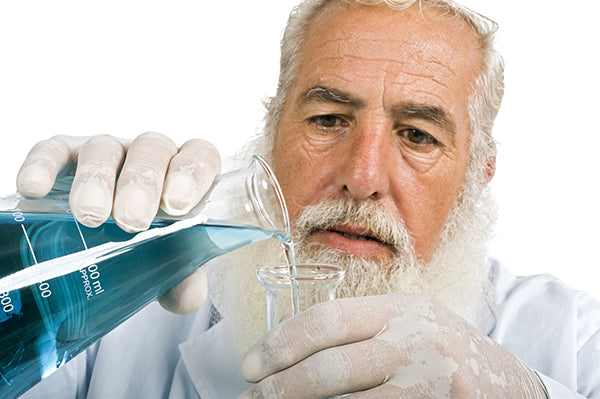
In honor of non-GMO month we've compiled basic educational info about GMOs: what they are; what the research says; what the benefits are and more... As part of our mission to provide natural products for all people, Growing Naturals is a proud supporter of Non-GMO products. All of our current products are Non-GMO Project verified.
The Non-GMO Project honors the work that certified organic companies are already doing, with the added measure of testing risk ingredients at critical control points. Although GMO human studies are limited and human health risks are yet to be fully determined, a few animal studies have presented unpleasant findings. While there are both perceived benefits and controversies surrounding GMOs, Growing Naturals avoids any detriments (human, environmental, social and ethical alike) by providing health promoting, environmentally safe, non-GMO certified products.
What are Genetically Modified (GM) Foods?1
Although "biotechnology" and "genetic modification" (GM) are commonly used interchangeably, GM is a special set of technologies that alter the genetic makeup of organisms such as animals, plants, or bacteria. Biotechnology, a more general term, refers to using organisms or their components, such as enzymes, to make products that include wine, cheese, beer, and yogurt.
Combining genes from different organisms is known as recombinant DNA technology, and the resulting organism is said to be "genetically modified," "genetically engineered," or "transgenic." GM products (current or those in development) include medicines and vaccines, foods and food ingredients, feeds, and fibers.
Locating genes for important traits—such as those conferring insect resistance or desired nutrients—is one of the most limiting steps in the process. However, genome sequencing and discovery programs for hundreds of organisms are generating detailed maps along with data-analyzing technologies to understand and use them. In 2006, 252 million acres of transgenic crops were planted in 22 countries by 10.3 million farmers. The majority of these crops were herbicide- and insect-resistant soybeans, corn, cotton, canola, and alfalfa. Other crops grown commercially or field-tested are a sweet potato resistant to a virus that could decimate most of the African harvest, rice with increased iron and vitamins that may alleviate chronic malnutrition in Asian countries, and a variety of plants able to survive weather extremes.
On the horizon are bananas that produce human vaccines against infectious diseases such as hepatitis B; fish that mature more quickly; cows that are resistant to bovine spongiform encephalopathy (mad cow disease); fruit and nut trees that yield years earlier, and plants that produce new plastics with unique properties. In 2006, countries that grew 97% of the global transgenic crops were the United States (53%), Argentina (17%), Brazil (11%), Canada (6%), India (4%), China (3%), Paraguay (2%) and South Africa (1%). Although growth is expected to plateau in industrialized nations, it is increasing in developing countries.
The next decade will see exponential progress in GM product development as researchers gain increasing and unprecedented access to genomic resources that are applicable to organisms beyond the scope of individual projects. Technologies for genetically modifying foods offer dramatic promise for meeting some of the 21st Century's greatest challenges. Like all new technologies, they also pose some risks, both known and unknown. Controversies surrounding GM foods and crops commonly focus on human and environmental safety, labeling and consumer choice, intellectual property rights, ethics, food security, poverty reduction, and environmental conservation.
Are GMOs safe?1-3
Most developed nations do not consider GMOs to be safe. However, the World Health Organization states that GM foods currently available on the international market have passed risk assessments by national authorities and are not likely to present risks for human health. In nearly 50 countries around the world, including Australia, Japan, and all of the countries in the European Union, there are significant restrictions or outright bans on the production and sale of GMOs.
In the U.S., the government has approved GMOs based on studies conducted by the same corporations that created them
What do animal findings suggest?4
While animal findings may suggest problems with consuming GM foods for animals, the reality is that the findings don't suggest much for humans. This goes with any research. Just because a certain effect was seen in animals does not mean that the same effect will be seen humans as well because they are completely different organisms.
Are GMOs labeled?2
Although polls consistently show that a significant majority of Americans want to know if the food they’re purchasing contains GMOs, the US does not currently require labeling of all GM foods. However, labeling requirements under the Federal Food, Drug and Cosmetic Act may determine whether certain GM foods are in fact labeled. If a GM food is significantly different from its non-GMO counterpart, the name must be changed to describe the difference. This includes changes in nutritional properties or allergenicity.
How do GMOs affect farmers?2
Because GMOs are novel life forms, biotechnology companies have been able to obtain patents with which to restrict their use. As a result, the companies that make GMOs now have the power to sue farmers whose fields are contaminated with GMOs, even when it is the result of inevitable drift from neighboring fields. GMOs therefore pose a serious threat to farmer sovereignty and to the national food security of any country where they are grown, including the United States.
How do GMOs impact the environment?3
Issues of concern include: the capability of the GMO to escape and potentially introduce the engineered genes into wild populations; the persistence of the gene after the GMO has been harvested; the susceptibility of non-target organisms (e.g. insects which are not pests) to the gene product; the stability of the gene; the reduction in the spectrum of other plants including loss of biodiversity; and increased use of chemicals in agriculture. The environmental safety aspects of GM crops vary considerably according to local conditions. Current research studies are focusing on: the potentially detrimental effect on beneficial insects or a faster induction of resistant insects; the potential generation of new plant pathogens; the potential detrimental consequences for plant biodiversity and wildlife, and a decreased use of the important practice of crop rotation in certain local situations; and the movement of herbicide resistance genes to other plants.
High-Risk Crops (in commercial production; ingredients derived from these must be tested every time prior to use in Non-GMO Project Verified products (as of December 2011): Monitored Crops (those for which suspected or known incidents of contamination have occurred, and those crops which have genetically modified relatives in commercial production with which cross-pollination is possible; we test regularly to assess risk, and move to “High-Risk” category for ongoing testing if we see contamination): Common Ingredients Derived from GMO Risk Crops Amino Acids, Aspartame, Ascorbic Acid, Sodium Ascorbate, Vitamin C, Citric Acid, Sodium Citrate, Ethanol, Flavorings (“natural” and “artificial”), High-Fructose Corn Syrup, Hydrolyzed Vegetable Protein, Lactic Acid, Maltodextrins, Molasses, Monosodium Glutamate, Sucrose, Textured Vegetable Protein (TVP), Xanthan Gum, Vitamins, Yeast Products.What foods are GMOs?5
Agricultural products are segmented into two groups: (1) those that are high-risk of being GMO because they are currently in commercial production, and (2) those that have a monitored risk because suspected or known incidents of contamination have occurred and/or the crops have genetically modified relatives in commercial production with which cross-pollination (and consequently contamination) is possible.
GM Products: Benefits and Controversies1
Benefits
Controversies
References:
